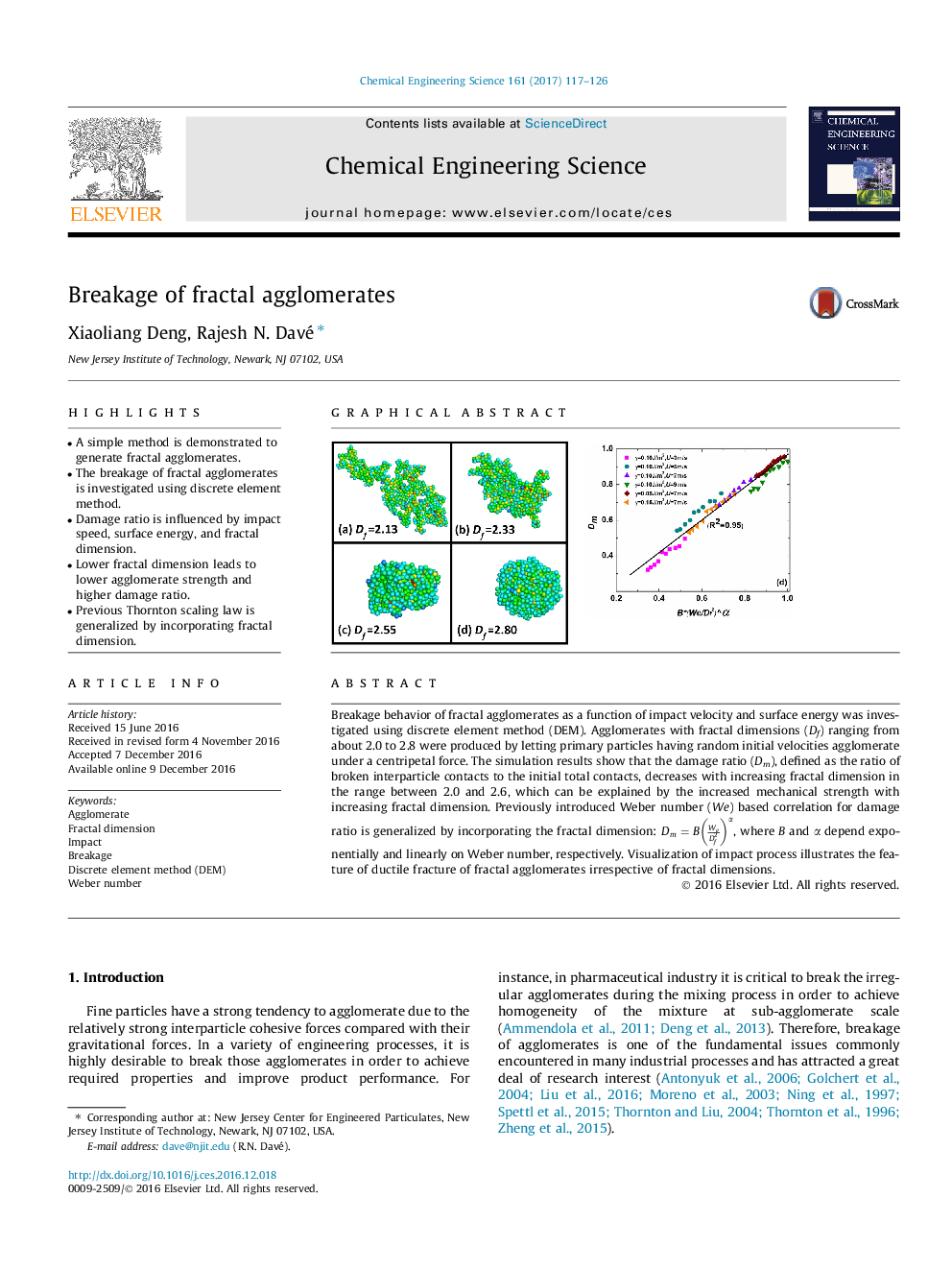| Article ID | Journal | Published Year | Pages | File Type |
|---|---|---|---|---|
| 6467504 | Chemical Engineering Science | 2017 | 10 Pages |
•A simple method is demonstrated to generate fractal agglomerates.•The breakage of fractal agglomerates is investigated using discrete element method.•Damage ratio is influenced by impact speed, surface energy, and fractal dimension.•Lower fractal dimension leads to lower agglomerate strength and higher damage ratio.•Previous Thornton scaling law is generalized by incorporating fractal dimension.
Breakage behavior of fractal agglomerates as a function of impact velocity and surface energy was investigated using discrete element method (DEM). Agglomerates with fractal dimensions (Df) ranging from about 2.0 to 2.8 were produced by letting primary particles having random initial velocities agglomerate under a centripetal force. The simulation results show that the damage ratio (Dm), defined as the ratio of broken interparticle contacts to the initial total contacts, decreases with increasing fractal dimension in the range between 2.0 and 2.6, which can be explained by the increased mechanical strength with increasing fractal dimension. Previously introduced Weber number (We ) based correlation for damage ratio is generalized by incorporating the fractal dimension: Dm=BWeDf2α, where B and α depend exponentially and linearly on Weber number, respectively. Visualization of impact process illustrates the feature of ductile fracture of fractal agglomerates irrespective of fractal dimensions.
Graphical abstractFigure optionsDownload full-size imageDownload high-quality image (260 K)Download as PowerPoint slide
